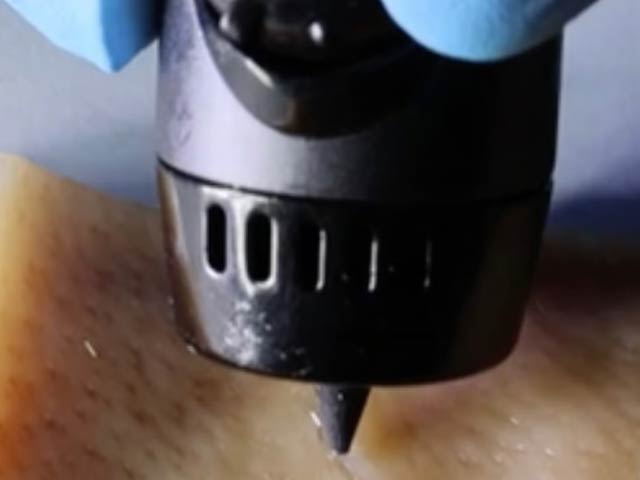Chinese experts have created a thin 3D pen that delivers a hydrogel that quickly heals wounds. Photo: Nanjing University
Beijing: After the invention of 3D technology and biogel, many laboratories are now creating systems, nozzles and pans that can be tested on humans, if not today.
Scientists from Nanjing University in China have developed a pen-like nozzle in this regard and the entire system has been named ‘Portable Bioactive Ink for Tissue Healing’ or ‘Paint’. This will allow healing gel and healing light to be applied directly to the wounds.
The main object in this system is a 3D pen which contains sodium alginate gel and some particles added to it. These particles are called extracellular vesicles (OVs). EVs are produced naturally in blood cells and play an important role in wound healing and reducing inflammation.
At the tip of the pen, the EV and gel mix together to form a thick solution. It can be molded into any shape and size. It has been tested in the first phase on different layers of human skin. Experts observed that healing light radiated from the pan. This leads to healing of wounds, formation of new blood vessels and reduced inflammation or irritation. This is undoubtedly an important development.
The pen, called Pent, was then tested on mice, and collagen, the main layer of the skin, began to form faster in them. In this way even the deep wounds of the mice started to heal within 12 days. Mice on which they were not tested had very slow wound healing.
However, a human trial is still a long way off.
(function(d, s, id){
var js, fjs = d.getElementsByTagName(s)[0];
if (d.getElementById(id)) {return;}
js = d.createElement(s); js.id = id;
js.src = “//connect.facebook.net/en_US/sdk.js#xfbml=1&version=v2.3&appId=770767426360150”;
fjs.parentNode.insertBefore(js, fjs);
}(document, ‘script’, ‘facebook-jssdk’));
(function(d, s, id) {
var js, fjs = d.getElementsByTagName(s)[0];
if (d.getElementById(id)) return;
js = d.createElement(s); js.id = id;
js.src = “//connect.facebook.net/en_GB/sdk.js#xfbml=1&version=v2.7”;
fjs.parentNode.insertBefore(js, fjs);
}(document, ‘script’, ‘facebook-jssdk’));


